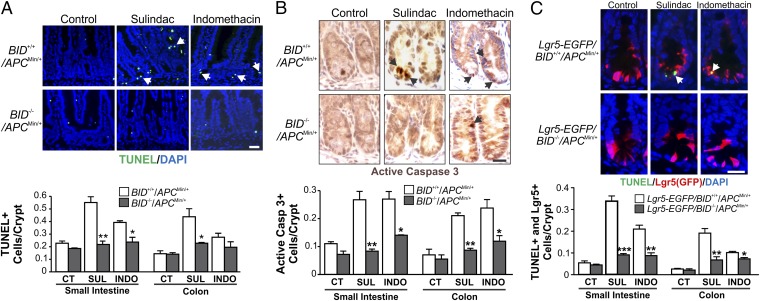Fig. 3.
BID deficiency abolishes NSAID-induced apoptosis in intestinal stem cells in APCMin/+ mice. (A and B) BID+/+ and BID−/− APC Min/+ mice were fed control (CT) or experimental AIN93G diet containing 200 ppm sulindac (SUL) or 10 ppm indomethacin (INDO) for 1 wk. Small intestinal and colonic sections were analyzed for apoptosis by TUNEL staining (green) (A) and active caspase 3 staining (brown) (B). (Upper) Representative staining pictures of small intestinal sections, with arrows indicating example cells with positive staining. (Lower) Mean + SD of positive signals in the small intestinal and colonic crypts. (C) Lgr5-EGFP–marked BID+/+ and BID−/− APCMin/+ mice were treated as in A and analyzed for intestinal stem cell apoptosis by TUNEL (green) and EGFP (Lgr5; red) double staining. (Upper) Representative staining pictures of small intestinal sections, with arrows indicating example double-positive cells. (Lower) Mean + SD of TUNEL/Lgr5 double-positive signals in the small intestinal and colonic crypts. (Scale bars: 25 µm.) *P < 0.05; **P < 0.01; ***P < 0.001 (n = 3 per group).

